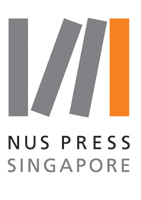National University of Singapore Press
Returning Southeast Asia’s Past
Objects, Museums, and Restitution
9789813251243
Distributed for National University of Singapore Press
Returning Southeast Asia’s Past
Objects, Museums, and Restitution
For the past century and a half, extensive looting and illicit trafficking of Southeast Asia's cultural heritage have scattered art objects from the region to museums and private collections around the world. Today, however, power relations are shifting, a new awareness is growing, and new questions are emerging about the representation and ownership of Southeast Asian cultural material located in the West. This book offers a timely consideration of object restitution and related issues across Southeast Asia, bringing together a range of viewpoints, including those of museum professionals and scholars in Cambodia, Thailand, Vietnam, and Indonesia, as well as Europe, North America, and Australia. The contributors address legal, cultural, political and diplomatic issues involved in the restitution process, and they also look at the ways object restitution is integral to evolving narratives of national identity. Ultimately, the book’s editors conclude, restitution processes can transform narratives of loss into opportunities for gain, building knowledge and reconstructing relationships across national borders.
304 pages | 54 color plates | 7 1/4 x 9 1/4 | © 2021
Art and Archaeology of Southeast Asia: Hindu-Buddhist Traditions
Reviews
Table of Contents
List of figures
Foreword
Acknowledgements
1. Introduction: Collecting and Returning Southeast Asia’s Past
Part I: Artefact Ownership
2. The Selling of Khmer Artefacts during the Colonial Era: Questioning the Perception of Khmer Heritage through a Study of Traded Khmer Art Pieces (1920s–1940s)
3. The Looting of Koh Ker and the Return of the Prasat Chen Statues
4. Who Owns Ban Chiang? The Discovery, Collection and Repatriation of Ban Chiang Artefacts
Part II: Object Biographies and Colonial Legacies
5. On the Road Back to Mandalay: The Burmese Regalia – Seizure, Display and Return to Myanmar in 1964
6. Bridging the Missing Gaps: The Politics of Display at the Ð?ng Duong Buddhist Art Gallery
7. Restitution and National Heritage: (Art) Historical Trajectories of Raden Saleh’s Paintings
8. Returns by the Netherlands to Indonesia in the 2010s and the 1970s
Part III: Museums, Restitution, and Cultural Identities
9. The Return of Cultural Property and National Identity in Postcolonial Indonesia
10. Plaibat: Reclaiming Heritage, Social Media, and Modern Nationalism
11. Myanmar, Museums, and Repatriation of Cultural Heritage
Contributors
Index
Foreword
Acknowledgements
1. Introduction: Collecting and Returning Southeast Asia’s Past
Part I: Artefact Ownership
2. The Selling of Khmer Artefacts during the Colonial Era: Questioning the Perception of Khmer Heritage through a Study of Traded Khmer Art Pieces (1920s–1940s)
3. The Looting of Koh Ker and the Return of the Prasat Chen Statues
4. Who Owns Ban Chiang? The Discovery, Collection and Repatriation of Ban Chiang Artefacts
Part II: Object Biographies and Colonial Legacies
5. On the Road Back to Mandalay: The Burmese Regalia – Seizure, Display and Return to Myanmar in 1964
6. Bridging the Missing Gaps: The Politics of Display at the Ð?ng Duong Buddhist Art Gallery
7. Restitution and National Heritage: (Art) Historical Trajectories of Raden Saleh’s Paintings
8. Returns by the Netherlands to Indonesia in the 2010s and the 1970s
Part III: Museums, Restitution, and Cultural Identities
9. The Return of Cultural Property and National Identity in Postcolonial Indonesia
10. Plaibat: Reclaiming Heritage, Social Media, and Modern Nationalism
11. Myanmar, Museums, and Repatriation of Cultural Heritage
Contributors
Index

